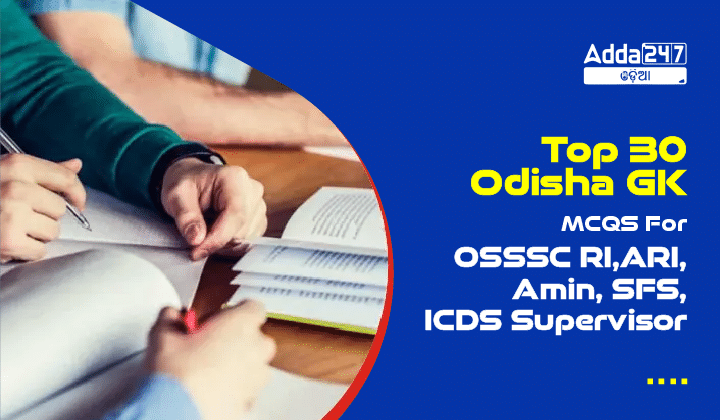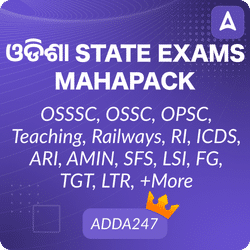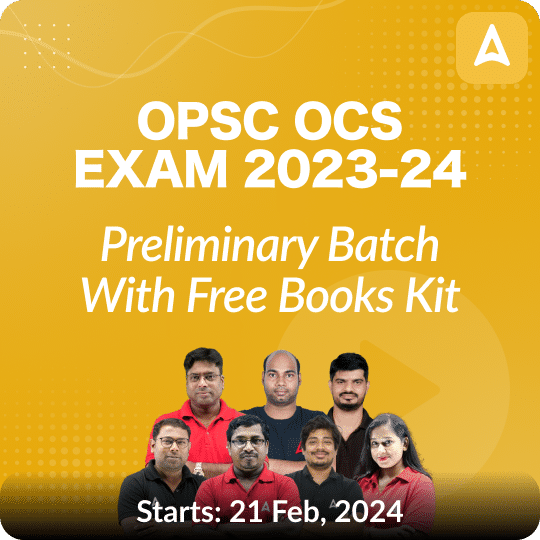General Knowledge is a crucial component of competitive exams, and when it comes to Odisha, a rich tapestry of history, culture, and geography awaits exploration. As you prepare for OSSSC RI, ARI, Amin, SFS, ICDS Supervisor exams, mastering Odisha GK is indispensable. This article presents a curated set of Top 30 Odisha General Knowledge Multiple-Choice Questions (MCQs) to sharpen your knowledge base and boost your exam readiness.
Top 30 Odisha GK MCQs for OSSSC RI,ARI, Amin, SFS, ICDS Supervisor
- After the invasion of Samudragupta, who rose to power in the coastal belt of Odisha?
[A] Matharas
[B] Gangas
[C] Nalas
[D] Meghas
Correct Answer: A [Matharas]
Explanation: The Matharas gained control immediately following Samudragupta’s campaign. Shaktivarmana, a ruler of the Mathara dynasty, was titled “Lord of Kalinga.” - Which dynasty came into prominence in the coastal region of Odisha after the conquest by Samudragupta?
[A] Cholas
[B] Pallavas
[C] Matharas
[D] Chalukyas
Correct Answer: C [Matharas]
Explanation: Following Samudragupta’s conquest, the Mathara dynasty rose to power in the coastal region of Odisha, with rulers like Shaktivarmana assuming the title “Lord of Kalinga.” - Who established dominance in the coastal belt of Odisha subsequent to Samudragupta’s invasion?
[A] Gangas
[B] Satavahanas
[C] Matharas
[D] Cheras
Correct Answer: C [Matharas]
Explanation: The Mathara dynasty ascended to prominence in the coastal belt of Odisha after Samudragupta’s invasion, with rulers such as Shaktivarmana exerting control and adopting the title “Lord of Kalinga.” - Which deity did the Sailodvabhavas primarily follow?
[A] Shaivism
[B] Vaishnavism
[C] Buddhism
[D] Jainism
Correct Answer: A [Shaivism]
Explanation: The Sailodvabhavas were followers of Shaivism, as evidenced by their construction of the Parashurameshvara Shiva temple in Bhubaneswar. - What was the main deity worshipped by the Sailodvabhavas?
[A] Vishnu
[B] Shiva
[C] Brahma
[D] Durga
Correct Answer: B [Shiva]
Explanation: Sailodvabhavas primarily worshipped Shiva, as indicated by their adherence to Shaivism and the construction of Shiva temples like the Parashurameshvara temple. - During the Ganga period, which religion was prominent among the rulers of Odisha?
[A] Hinduism
[B] Buddhism
[C] Jainism
[D] Islam
Correct Answer: A [Hinduism]
Explanation: Hinduism, particularly Shaivism, was prevalent among the rulers of Odisha during the Ganga period, as evidenced by the construction of Hindu temples. - What were the main commodities exported during the Ganga period?
[A] Spices
[B] Textiles
[C] Gemstones
[D] All of the above
Correct Answer: D [All of the above]
Explanation: During the Ganga period, Odisha was known for exporting a variety of goods including textiles, gemstones, spices, and other commodities. - Which period saw the zenith of the Kalinga school of architecture?
[A] Gajapati
[B] Karrani
[C] Bhoi
[D] Ganga
Correct Answer: D [Ganga]
Explanation: The Kalinga school of architecture reached its peak during the Ganga period, showcasing intricate temple designs and artistic excellence. - Who built the Parashurameshvara Shiva temple in Bhubaneswar?
[A] Gajapati rulers
[B] Sailodvabhavas
[C] Bhoi dynasty
[D] Karrani rulers
Correct Answer: B [Sailodvabhavas]Explanation: The Sailodvabhavas constructed the Parashurameshvara Shiva temple in Bhubaneswar, indicating their devotion to Shaivism. - Which religious tradition did the Sailodvabhavas contribute to significantly?
[A] Buddhism
[B] Jainism
[C] Shaivism
[D] Vaishnavism
Correct Answer: C [Shaivism]Explanation: Sailodvabhavas made notable contributions to Shaivism, as evidenced by their construction of Shiva temples. - During the Ganga period, what was the primary architectural style employed in temple construction?
[A] Dravidian
[B] Nagara
[C] Vesara
[D] Hoysala
Correct Answer: B [Nagara]
Explanation: The Nagara style of architecture was predominantly used during the Ganga period for temple construction in Odisha. - Which dynasty saw the flourishing of trade relations with Southeast Asian countries?
[A] Bhoi
[B] Gajapati
[C] Karrani
[D] GangaCorrect
Answer: B [Gajapati]
Explanation: The Gajapati dynasty facilitated significant trade with Southeast Asian countries, contributing to the prosperity of Odisha. - In addition to textiles and gemstones, what other commodity was exported during the Ganga period?
[A] Timber
[B] Ivory
[C] Rice
[D] TeaCorrect
Answer: B [Ivory]
Explanation: Along with textiles and gemstones, ivory was also exported during the Ganga period, contributing to Odisha’s trade relations with Southeast Asia. - Who led the revolt against the Sunset Law introduced by Cornwallis?
[A] Surendra Sai
[B] Chandan Hajuri
[C] Ramakrushna Samantasinghar
[D] None of the above
Correct Answer: C [Ramakrushna Samantasinghar]
Explanation: Ramakrushna Samantasinghar led the revolt against the Sunset Law, which was introduced by Cornwallis. - In which year was the Odisha State People’s Conference organized in Cuttack?
[A] 1920
[B] 1921
[C] 1929
[D] 1931
Correct Answer: D [1931]
Explanation: The Odisha State People’s Conference was organized in 1931 in Cuttack, with Bhubananda Das serving as the president, to address public grievances. - Who was the president of the Odisha State People’s Conference held in Cuttack in 1931?
[A] Surendra Sai
[B] Ramakrushna Samantasinghar
[C] Bhubananda Das
[D] Chandan Hajuri
Correct Answer: C [Bhubananda Das]
Explanation: Bhubananda Das served as the president of the Odisha State People’s Conference held in Cuttack in 1931. - Which law did Ramakrushna Samantasinghar revolt against?
[A] Rowlatt Act
[B] Sunset Law
[C] Vernacular Press Act
[D] Pitt’s India Act
Correct Answer: B [Sunset Law]
Explanation: Ramakrushna Samantasinghar revolted against the Sunset Law introduced by Cornwallis. - What was the purpose of the Odisha State People’s Conference organized in 1931?
[A] To discuss educational reforms
[B] To address public grievances
[C] To celebrate a historical event
[D] To promote cultural activities
Correct Answer: B [To address public grievances]
Explanation: The Odisha State People’s Conference held in 1931 aimed to address public grievances and concerns. - What recent project did INTACH introduce in Odisha’s Koraput region?
[A] Revitalizing the Kerang fabric of the Gadaba tribe
[B] Constructing new homes for tribal communities
[C] Establishing a museum showcasing tribal artifacts
[D] Implementing a healthcare initiative for tribal populations
Correct Answer: A [Revitalizing the Kerang fabric of the Gadaba tribe]
Explanation: INTACH recently launched a project aimed at revitalizing the Kerang fabric tradition of the Gadaba tribe in Odisha’s Koraput region. - What is the traditional method used by the Gadaba and Bonda tribes to make clothes from Kerang fiber?
[A] Spinning
[B] Weaving
[C] Knitting
[D] Crocheting
Correct Answer: B [Weaving]
Explanation: The Gadaba and Bonda tribes collect bark from wild Kerang trees, extract the fiber, and weave it using traditional methods to make clothes. - What type of clothing do Gadaba women typically wear made from Kerang fabric?
[A] Shorts
[B] Sarees with colorful stripes
[C] Skirts
[D] Kurtas
Correct Answer: B [Sarees with colorful stripes]
Explanation: Gadaba women usually wear full-length clothes or sarees with colorful stripes made from Kerang fabric. - How long are clothes made from Kerang fabric known to last?
[A] Up to 10 years
[B] Up to 50 years
[C] Up to 100 years
[D] Up to 200 years
Correct Answer: C [Up to 100 years]
Explanation: Clothes made from Kerang fabric are known to last for several generations, sometimes up to 100 years. - What was the main objective of INTACH’s project in the Lamptaput block of Odisha?
[A] Promoting tourism in tribal villages
[B] Providing healthcare services to tribal communities
[C] Reviving the tradition of making Kerang fabric
[D] Offering education and vocational training to tribal youth
Correct Answer: C [Reviving the tradition of making Kerang fabric]
Explanation: The main objective of INTACH’s project in the Lamptaput block of Odisha was to revive the dying tradition of making Kerang fabric among the Gadaba tribe by providing assistance and workshops. - In which Indian state has the Swakalpa programme been initiated?
[A] Odisha
[B] Karnataka
[C] Maharashtra
[D] Tamil Nadu
Correct Answer: A [Odisha]
Explanation: The Swakalpa programme has been initiated in the state of Odisha by the Odisha Skill Development Authority (OSDA) in collaboration with Meesho and other partners. - What is the vision of the Swakalpa programme?
[A] To provide free healthcare to rural communities
[B] To transform Odisha into the Entrepreneurial Capital of the Country
[C] To promote eco-tourism in the Himalayan region
[D] To enhance agricultural productivity in rural areas
Correct Answer: B [To transform Odisha into the Entrepreneurial Capital of the Country]
Explanation: The vision of the Swakalpa programme is to transform Odisha into the Entrepreneurial Capital of the Country. - How many individuals are expected to benefit from the Swakalpa programme?
[A] 5,000
[B] 10,000
[C] 15,000
[D] 20,000
Correct Answer: B [10,000]
Explanation: The Swakalpa programme aims to benefit 10,000 individuals in Odisha. - What percentage of women representation is targeted in the Swakalpa programme?
[A] 10%
[B] 15%
[C] 20%
[D] 25%
Correct Answer: D [25%]
Explanation: The Swakalpa programme aims for 25% women representation among its participants. - How many hours of entrepreneurship training are provided under the Swakalpa programme?
[A] 50 hours
[B] 75 hours
[C] 100 hours
[D] 125 hours
Correct Answer: C [100 hours]
Explanation: Participants receive 100 hours of entrepreneurship training as part of the Swakalpa programme. - How long is the mentorship period provided to participants after the entrepreneurship training?
[A] 3 months
[B] 6 months
[C] 9 months
[D] 12 months
Correct Answer: B [6 months]
Explanation: Participants receive six months of mentorship and handholding support after completing the entrepreneurship training. - Which prominent e-commerce platform has partnered with OSDA to implement the Swakalpa programme?
[A] Amazon
[B] Flipkart
[C] Meesho
[D] Snapdeal
Correct Answer: C [Meesho]
Explanation: Meesho, in partnership with OSDA, is managing the implementation of the Swakalpa programme in Odisha.
















